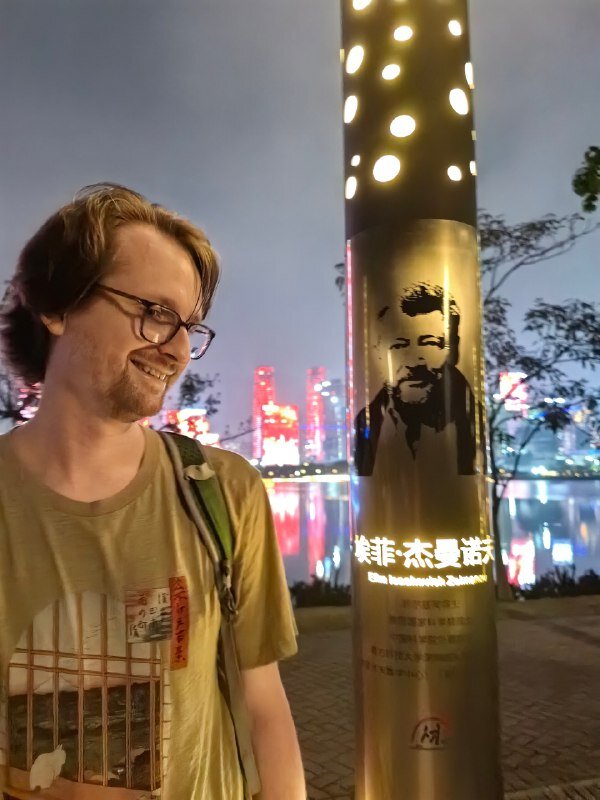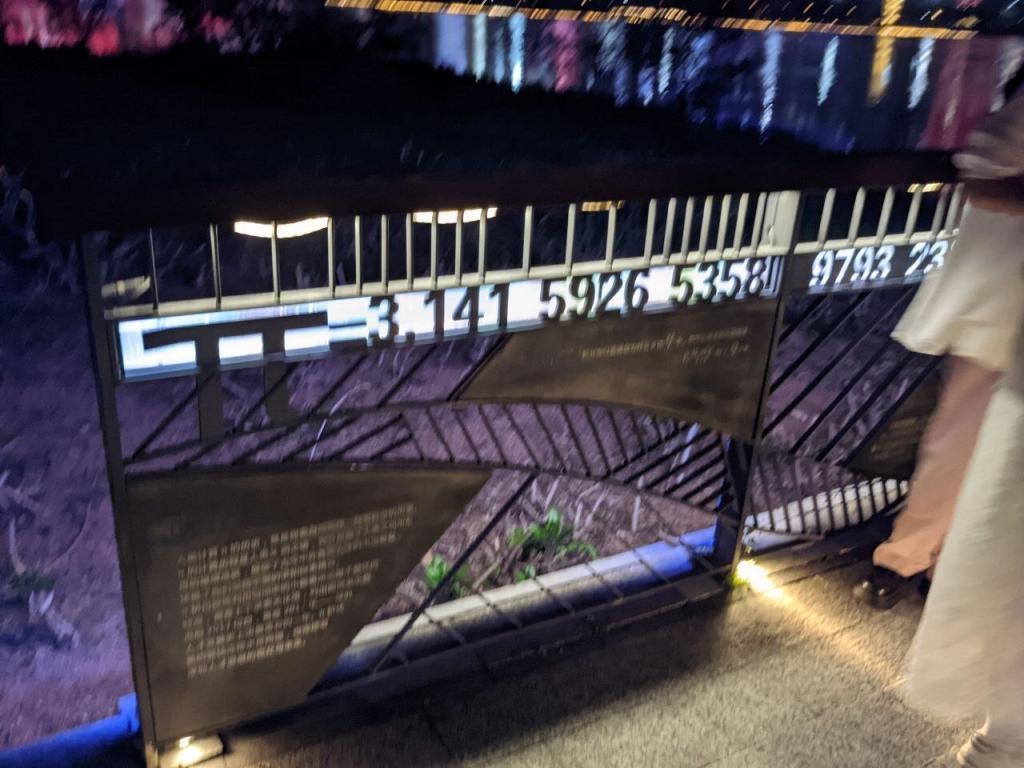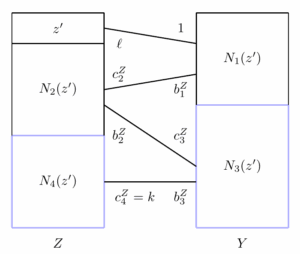Travel Advice for my Visitors
Traveling China is easy, but a bit tricky for the first. Thus, I give all my visitors a list of instructions. This blog post will summarize my usual advice. It is separated by general advice for China, then a list of useful apps, then specific advice for my university, SUSTech, and Shenzhen.
Note that the advice is for Mainland China, not for Hong Kong and Macao which work roughly the same as other countries. But this is a good place to emphasize that there is a border crossing between Hong Kong, Macao and Mainland China. Apparently, this is a common mistake. Visas for Mainland China, Hong Kong and Macao are distinct. Do not think that you can visit Shenzhen without a visa because you saw that this is true for Hong Kong!
Generic China Advice
The problems for traveling China come down to three things: (1) The whole digital infrastructure almost completely disjoint from most other countries. (2) China essentially skipped payment cards and went straight to digital payment. (3) Identification in China is often done by Chinese phone numbers. So here is my advice.
- Have the address of your accommodation written down in Chinese characters (Hanzi). Then taxi drivers can read it. Also helpful is an address in Pinyin. This you can use in apps. And maybe pronounce if you add tones and practice the sounds a bit. Not helpful at all is an address in English. Even if someone speaks Chinese and English at the level of a native speaker, it is often not clear which Chinese address it refer to.
- When you arrive at the airport (or other port of entry) get some Renminbi (the local currency). You do not need much as you want to pay most things using WeChat or Alipay (see below). But sometimes these do not work at first, so get enough cash to reach your hotel and maybe buy some food. At the time of writing, 400 RMB (50 Euros) are more than enough for that. Note that almost no one uses cash, so you cannot expect to get change.
If you land in Hong Kong, then this is not your port of entry. There you will only get Hong Kong Dollars which you cannot use in Mainland China. You will either take a ferry, a bus or a train to Mainland China. At the actual border crossing, you can get cash. - You will need your phone for everything in China. Either get a Chinese SIM card, perhaps at the airport, or a tourism SIM card before you travel. For the latter, an eSIM is suitable. At the time of writing, Airalo is a good deal. I have also used Holafly in the past. You can also buy a package for China from your normal provider. Again, SIM cards for Hong Kong and Macao are a different thing. Note that if you buy a local Chinese SIM card, then you will not be able to use most apps or websites which you are used to. But you will have a local phone number which might be helpful for long-term stays. Also: You need a phone number to use most WiFi networks! And: Many apps do not work with WiFi!
- Install WeChat (Wēixìn) and Alipay (Zhīfùbǎo). Ideally, both! Do so before you come to China. Set up your credit card with them before you come to China. If you fail with WeChat, then you will sometime struggle, but it will be fine. Even for a simple coffee you might need these.
- I recommend a power bank. You can rent them everywhere in China, so it is not a necessity. VPN and WeChat drain your battery quickly.
- When you reach, maybe you want to take a taxi from your port of entry to where you will stay. Take an official taxi. Usually, taxi stands are clearly designated. Just show them the address in Chinese. Some Chinese will tell you that this is complicated and too hard for foreigners. You can ignore such advice.
Recommended Apps
Now some recommendations for apps beyond the essential WeChat and Alipay (roughly, with decreasing importance):
- Amaps. Google Maps will not work in China. Apple Maps, I was told, is not always perfect. Amaps works very well. I use the Chinese interface (without speaking Chinese, randomly clicking around like a small child works), but recently it also added an English interface.
- A VPN client which works in China. This is optional if you come with a tourism SIM card. But, say, local WiFis will still block much. At the time of writing, LetsVPN is a popular and cheap option. Maybe check what the internet recommends before coming. Which VPN clients work changes over time. If you choose a local SIM card and you want to stay in touch with your friends and relatives at home, then a VPN client is a must. University VPN clients work sometimes.
- Didi is the easiest way for ordering taxis and private cars (like Uber). Note that there is a version of the app for China and one for not China. This applies to many apps. Here I am just writing this, so that you will not be surprised.
- Trip.com for booking flight and train tickets. This is not the cheapest method as you pay a small surcharge, but it is the most convenient one for short term stays. Some Chinese airlines do not have the best websites for booking tickets and the Chinese railways are easy to use, but not completely trivial.
- If you use Android, then InstantTranslate is a great app to translate your screen.
- Papago is decent for offline translations.
- Pleco if you like to look up the meaning of characters.
There are also things like Meituan (ordering food) or JD.com (ordering everything from a proper source) or Taoboa (ordering everything from a dubious source), but these seem to be very optional for short term stays. They do not have English versions (I think), but for that you have InstantTranslate.
Specific SUSTech/Shenzen Advice
If you stay around the SUSTech campus, then you can go there by one of the following:
- Take a taxi. From Shenzen airport it is usually around 120 RMB.
- Take the subway. Maybe 10 RMB. For SUSTech, Tanglang station is the best at the time of writing. But they are building a SUSTech subway station too. If you are a private guest of mine staying it my home, then you best ask me for my address.
- We send someone to pick you up and you do not need to worry about the above.

At SUSTech, you have the following food options nearby:
- If you live in the guesthouse of the university, then you are next to staff cafeteria where your breakfast will be served. With coupons you can also have lunch and dinner there.
- Otherwise, you will probably be in a hotel close to the two malls Baoneng and Tanglang. Both are full of eateries, restaurants, supermarkets, bakeries and other things. You can have a reasonable meal starting at 40 RMB.
- During the semester you will find many food trucks outside of Gate 6. Here you can have a decent meal starting at 12 RMB.
- If you are willing to go to other areas of Shenzhen, then there are very good international restaurants. For instance, I know a quite good Indian and an excellent Greek restaurant.
Some tourism:

- You can walk along the Dasha river from SUSTech to the sea. It takes three or four hours. Maybe you want to cycle or skip parts using Didi. Note that cycling is not allowed there on weekends or public holidays.
- I like Talent Park and the PI bridge there. See the pictures above. The area has many good restaurants.
- Visit Lianhuashan Park with its statue of Deng Xiaoping. This is also give you a nice view upon the Civic Center.
- Travel to Guangzhou. Shenzhen was founded in 1979 AD and has no history. Guangzhou was founded around 200 BC and has much history and local culture. It is 40 minutes by train (plus at least an hour to get to the train stations). Currently, I have no specific list of recommendation there. You will find much better Cantonese food there than in Shenzhen.
- If you have a multiple entry visa for Mainland China or similar, travel to Macao. It is a nice blend of Portuguese and Chinese architecture. I find it quite enjoyable. Often it is called the Las Vegas of Asia, but this is a lie. It has the casinos, but it lacks all the shows which Vegas has to offer.
- Sabrina Lato told me to add cat cafes to this list. One is in the Boaneng mall next to campus.
For Hong Kong I can offer a separate list in random order. Again, make sure that you can return to Mainland China with your travel document if necessary:
- I like the Mong Kok area.
- Victoria Peak has a nice view.
- The ten thousands Buddhas monastery is a very quirky Buddhist monastery. It has 10000(?) tiny toy Buddhas.
- Tsim Sha Tsui Waterfront Park and the avenue of stars are nice.
- Of course the city centre.
- Allegedly, the coastal defense museum is good.
- The Imperial Palace Museum is nice if you do not make it to Beijing itself.
- They have a giant Buddha statue next to the airport. That is a nice hike. Or you take the gondola.
- There is a Disneyland.
- You will find better Hong Kong-style food in Hong Kong than in Shenzhen.
This is all. I hope that it helps. I will edit this list whenever I notice that something is missing.

